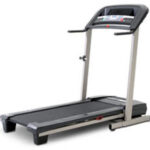 Peripheral artery disease affects blood circulation in the arteries that lead to the legs and feet. It results in pain, weakness, numbness, or cramping — mostly in older people.
Peripheral artery disease affects blood circulation in the arteries that lead to the legs and feet. It results in pain, weakness, numbness, or cramping — mostly in older people.
Researchers from the University of Florida, in Gainesville studied the effects of low intensity treadmill walking.
First, the details.
- 13 patients with peripheral vascular disease volunteered for twice weekly exercise sessions for 6 consecutive weeks.
- Sessions included a 10-minute stretching warm-up.
- Each patient exercised for 10 to 20 minutes as tolerated on the treadmill.
- Proprioceptive (unconscious perception of movement and spatial orientation) was conducted following walking.
And, the results.
- There was an average 148% improvement in distance, 34% in walking rate, and 94% in duration of walking.
- 5 patients had more than a 100% improvement in walking distance.
- 1 patient had a 100% improvement in the rate of walking.
- 4 patients had more than a 100% improvement in duration.
The bottom line?
The authors concluded that walking on a treadmill improve the ability of patient with peripheral vascular disease to perform tasks.
These results support findings reported by researchers from Northwestern University, in Chicago.
3/1/10 19:50 JR